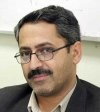| Authors | فریده صدیقی,مریم غیاثیان آرانی,محسن بهپور |
|---|
| Journal | Journal of Energy Storage |
|---|
| Page number | 1 |
|---|
| Volume number | 106 |
|---|
| IF | ثبت نشده |
|---|
| Paper Type | Full Paper |
|---|
| Published At | 2024-12-06 |
|---|
| Journal Grade | Scientific - research |
|---|
| Journal Type | Electronic |
|---|
| Journal Country | Iran, Islamic Republic Of |
|---|
| Journal Index | JCR ,SCOPUS |
|---|
Abstract
The nanocomposites for hydrogen storage were designed using three components: Al2(WO4)3, SrWO4, and carbon.
The sonochemical method was used to prepare binary Al2(WO4)3/SrWO4 nanocomposites (AW/SW) in the
presence of Schiff-base ligand of H2acacen as capping agent by modifying the sonication power and compared
with precipitation synthesis. The carbon component was derived from Date kernel powder and synthesized by
biomass method as Date kernel derived carbon (DKC). Designed ternary nanocomposites made of Al2(WO4)3/
SrWO4/DKC were used as the electrode material in the cell of the hydrogen storage system. The dosage of DKC
and ratios of AW:SW were the two parameters that were evaluated with regard to their influence on the hydrogen
storage capacity. CV and charge-discharge chronopotentiometry methods were utilized in order to investigate the
nanocomposites of Al2(WO4)3/SrWO4/DKC and their electrochemical characteristics. At a current of 1 mA, the
discharge capacity of Al2(WO4)3/SrWO4/DKC nanocomposites, which make up 5 % of the DKC component, was
measured at 406 mAhg???? 1. The Al2(WO4)3/SrWO4/DKC nanocomposites showed enough capability as a prospective
and promising active material for hydrogen storage devices, according to the results.
